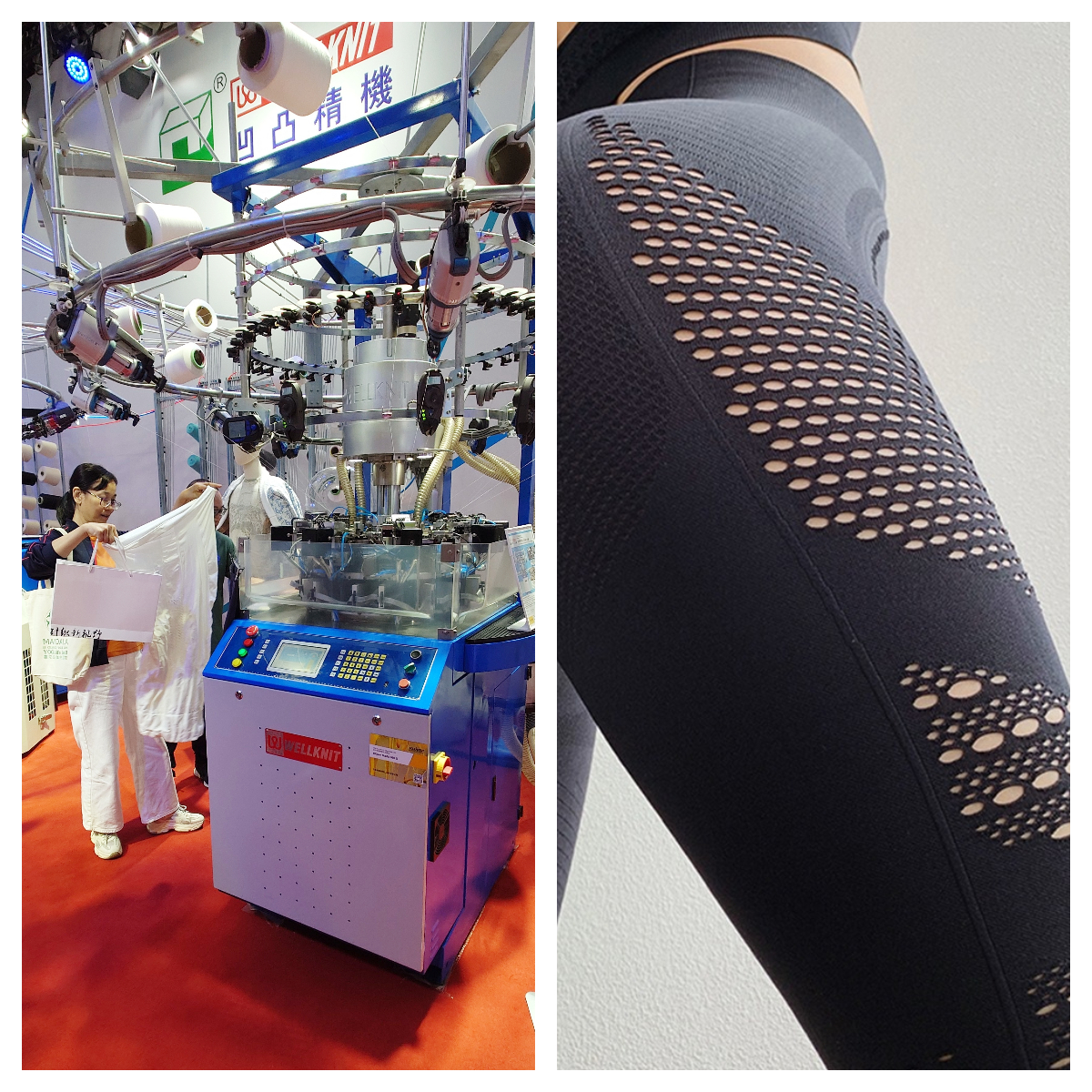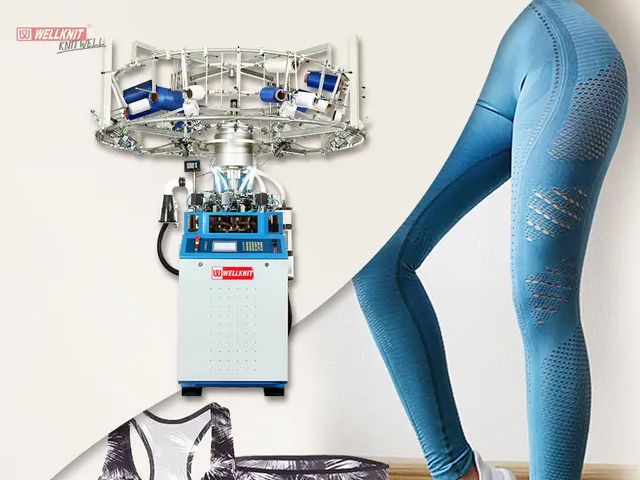- All
- Product Name
- Product Keyword
- Product Model
- Product Summary
- Product Description
- Multi Field Search
Views: 7 Author: Site Editor Publish Time: 2025-10-01 Origin: Site









In today's global textile industry, sustainability has moved from a marketing buzzword to a non-negotiable expectation. As fashion brands seek to reduce their carbon footprint and consumers demand more environmentally responsible products, the methods and machinery behind garment production are under increasing scrutiny. For lingerie manufacturers, the shift toward seamless knitting presents a compelling opportunity to merge innovation, efficiency, and eco-consciousness.
Wellknit Textile Technology Co., Ltd., a leading Taiwanese manufacturer of seamless knitting machines, has positioned itself at the forefront of this transformation. Through cutting-edge technology and a commitment to green manufacturing, Wellknit helps brands produce high-quality, comfortable lingerie while minimizing environmental impact. The company’s products are not only designed for performance and reliability, but also for contributing to a more sustainable apparel ecosystem.
Traditional lingerie production often relies on labor-intensive cut-and-sew techniques. These processes generate significant fabric waste, as garments are cut from large rolls of fabric and excess material is discarded. On average, manufacturers may waste up to 15% of each fabric roll due to pattern layout limitations and trimming. Moreover, multiple stitching operations, elastic attachments, and labeling steps not only consume additional resources but also require the use of chemical adhesives, synthetic dyes, and wastewater-heavy finishing processes—all of which can harm the environment.
In contrast, seamless knitting eliminates the need for many of these wasteful and polluting practices. The circular knitting technology used in Wellknit's machines allows for the direct creation of finished garments without the need for sewing or cutting. Instead of cutting shapes from fabric, the machine knits the garment into its final form. This method ensures that yarn is used more efficiently, significantly reducing the volume of textile waste.
Furthermore, seamless garments do not require bulky seam lines, reducing the number of components and enabling more streamlined production. This change alone can lead to a 25–30% reduction in production steps, translating into lower operational energy consumption and faster throughput.

One of the most significant environmental benefits of seamless knitting is the reduction of fabric waste. In the fashion industry, textile waste is a major concern, with millions of tons discarded globally each year. Traditional cut-and-sew manufacturing can waste up to 15% of fabric per garment. Seamless knitting, by contrast, reduces this to nearly zero. Because garments are knitted into tubular shapes that match the body’s contours, there’s no need for excess fabric trimming or leftover scraps.
Wellknit's seamless underwear knitting machines are designed with waste minimization in mind. Advanced programming enables precise control over yarn placement, ensuring that each stitch contributes directly to the final garment. These machines are capable of knitting varying fabric densities within a single piece, enabling body-mapped comfort zones without the need for additional materials. There are no scraps to discard—what you see on the knitting plan is exactly what is produced on the machine. This translates not only to waste reduction but also to material cost savings for manufacturers.
As fashion brands pivot toward sustainable materials, Wellknit machines have adapted to work with a variety of eco-friendly yarns. Whether it’s recycled polyester (rPET), organic cotton blends, or biodegradable fibers like TENCEL™, bamboo viscose, and PLA (polylactic acid), Wellknit's machinery supports their seamless integration into lingerie production. These materials often have unique tensile properties, moisture behavior, and elasticity that require specialized handling.
Wellknit's seamless knitting machines are equipped with yarn feeding systems and tension controls that can be finely adjusted to accommodate these variations. This compatibility ensures that brands can switch to greener raw materials without sacrificing performance, efficiency, or final product quality. Additionally, using sustainable yarns in combination with seamless construction enhances the ecological value of each lingerie piece, offering brands a strong value proposition in eco-conscious markets.
This level of flexibility empowers manufacturers to innovate with environmentally friendly materials while maintaining the softness, stretchability, and durability that consumers expect from intimate apparel.
Beyond waste and materials, energy consumption plays a critical role in a product’s environmental impact. Traditional lingerie factories often rely on energy-intensive processes such as multiple sewing stages, pressing, trimming, and steaming. Seamless knitting streamlines production into a single, continuous process, drastically reducing the total energy required for garment assembly.
Wellknit’s machines are engineered with energy efficiency in mind. They feature high-precision servo motors, smart cooling systems, and optimized power distribution. These innovations contribute to lower electricity usage during operation, helping manufacturers reduce their carbon emissions. Additionally, the machines run quieter and require less frequent maintenance, lowering both the operational and environmental costs.
Another key sustainability advantage is the longevity of the garments themselves. Lingerie made with seamless technology is generally more durable than its cut-and-sewn counterparts. With no sewn seams to fray or weaken, the integrity of the fabric remains intact even after repeated wear and wash cycles. This extended product lifespan reduces the frequency of consumer replacement and, by extension, the overall volume of textile waste entering landfills.
Longer-lasting lingerie also means better value for consumers and more brand loyalty—benefits that further amplify the positive environmental ripple effect initiated by Wellknit’s machinery.

As global attention on climate change and environmental preservation intensifies, manufacturers across the fashion and textile industries are expected to take real, measurable steps toward sustainability. For lingerie brands, this means re-evaluating everything from material sourcing to production methods and lifecycle impact.
Wellknit Textile Technology Co., Ltd. offers an intelligent, forward-thinking solution through its seamless knitting technology. By reducing waste, embracing recycled materials, lowering energy consumption, and enhancing product durability, Wellknit is helping redefine the standards of eco-friendly lingerie manufacturing.
Sustainability is not a passing trend—it is the new benchmark for competitive, responsible business. With Wellknit, lingerie brands don’t have to choose between comfort, efficiency, and environmental responsibility. They can have it all, seamlessly. Whether you’re launching a new sustainable line or transforming an entire production process, Wellknit provides the tools and expertise to make your green goals a reality.
How Seamless Knitting Enhances Breathability And Fit in Eco-Lingerie
How Seamless Knitting Machines Are Revolutionizing Sports Underwear Production
Reducing Waste in Underwear Manufacturing with Seamless Knitting Solutions
How Wellknit Enhances Comfort And Efficiency in Seamless Lingerie Production
Why The Global Lingerie Market Is Shifting To Seamless Underwear Solutions
What Is The Difference Between Circular Knitting Machine And Flat Knitting Machine?
Innovative Design And Production Techniques for Breathable Fashion Wear